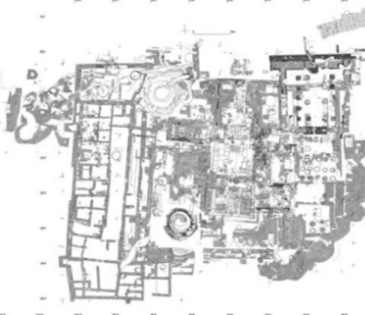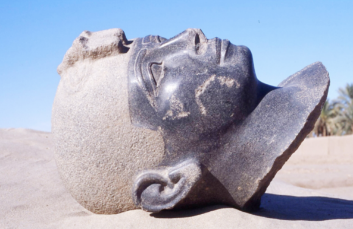Doukki Gel
The Egyptian city of Doukki Gel, founded by the pharaohs of the 18th Dynasty, was occupied from 1450 BC. AD to 400 AD. J.-C.
The city succeeded the ancient capital of the kingdom of Kerma, located a kilometer further south. For about ten years, it has been the subject of archaeological excavations which focus in particular on the religious district, formed by several temples, a processional roadway 70 meters long, a palatial building, as well as perimeter walls with small rectangular bastions. Two large wells with essentially ceremonial functions are also part of this religious complex. The north well has a very wide staircase established on a stone plinth, the masonry of which is characteristic of Classic Kerma. The two accesses to the south well, located at different levels, are underground and vaulted. They were probably laid out through the remains of a disused sanctuary from the beginning of the 18th Dynasty.
To the west and south of the religious quarter are the outbuildings of the Napatan and Meroitic temples. They bring together all the workshops and stores necessary for the production of offerings of bread, beer and meat. The loaves were made in terracotta molds, the remains of which eventually formed an impressive hill that gave the site its name, Doukki Gel literally meaning “red mound”. The contemporary necropolis has not been found, except for a few tombs unearthed in the modern city of Kerma.
Doukki Gel's "hiding place"
In January 2003, during the excavation of a temple, the excavation of a grave containing 40 fragments of black granite statues confirmed the importance of the site. It was a favissa, where revered sculptures had been placed in a safe place and with care. The statues had been knowingly broken, so as to destroy the “power” of the pharaohs represented: they are all broken at the level of the head and the legs, sometimes they are also the arms, the cases, the nose or the uraei.
The monumental statues are seven in number. They represent the last two kings of the XXVth Dynasty, Taharqa and Tanoutamon, as well as three of their successors, Senkamanisken, Anlamani and Aspelta, identified in particular by the inscriptions engraved on the dorsal pillar. This discovery also makes it possible to ensure that the site of Doukki Gel corresponds well to the ancient city of Pnoubs, each statue bearing the mention of “Amon de Pnoubs”, one of the major hypostases of the Kushite Amun.
Tanoutamon and Senkamanisken are each featured twice. The largest is that of Taharqa (270 cm), the smallest that of Aspelta (123 cm). The granite is polished with care, but certain details of the garment, adornment or cap are pitted. This treatment ensured better adhesion to the pigments and to the fabric covered with a thin layer of gold leaf plaster.
These sculptures of “black pharaohs” enrich our knowledge over a period of which few witnesses had been recognized in Doukki Gel. The site takes on all the more importance as comparisons are possible today with the hiding place discovered by George A. Reisner in 1916, at the foot of Gebel Barkal. Several years were needed to study and restore these statues, probably broken during the destructive raid of Pasmmétique II in Nubia, shortly before 590 BC. J.-C.
For more information, see the publications of C. Bonnet (archeology), by D. Valbelle (epigraphy) and P. Ruffieux (ceramology).




